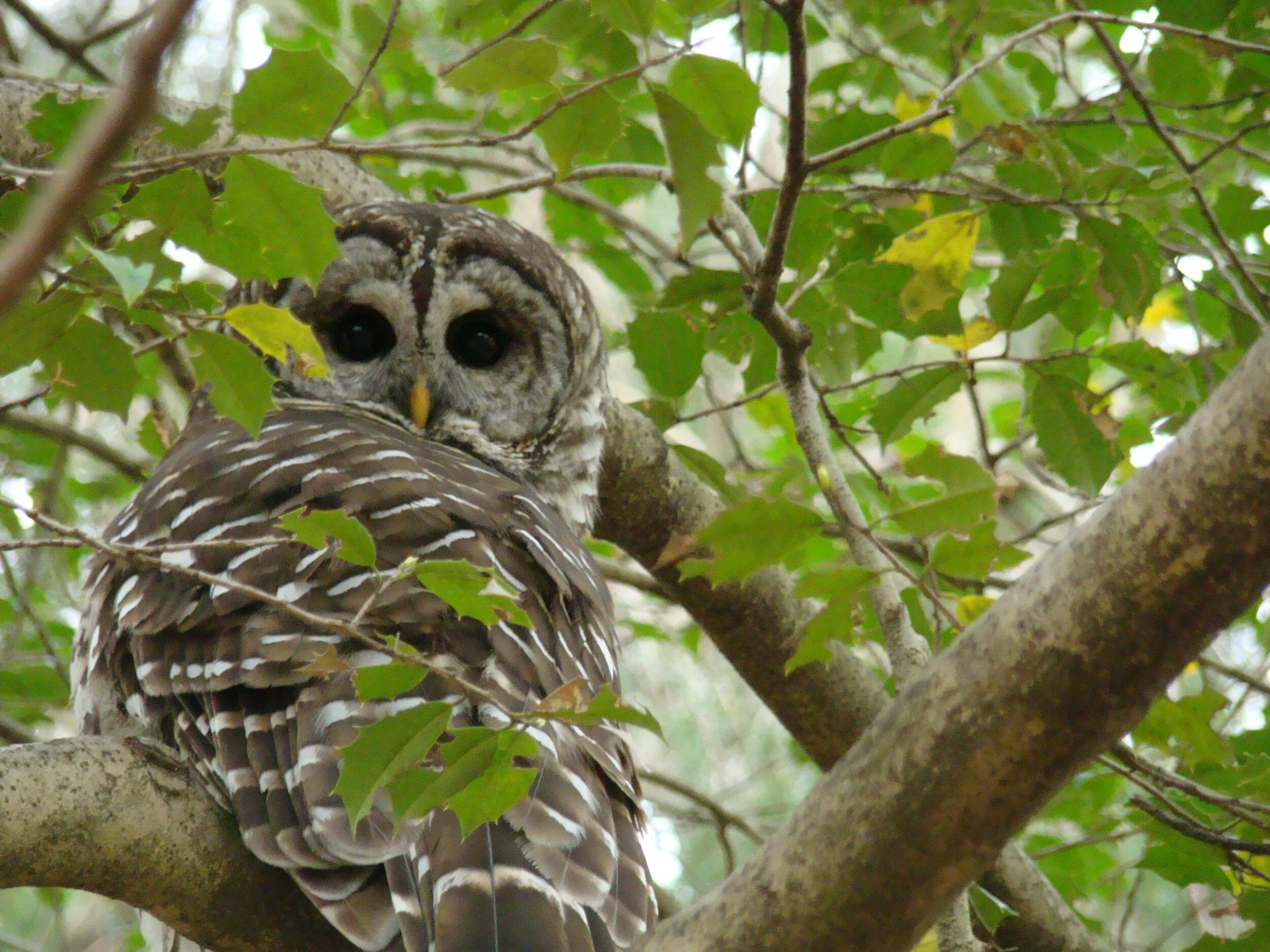Photo: Barred Owls, Lisa Mackem
By Lisa Mackem
Barred Owls are some of our most intriguing local birds. Most people will recognize their hoot-sequence call that sounds like, “Who cooks for you, who cooks for you all?” Unlike many other owls, they are semi-nocturnal. Their name comes from their striped plumage, or “bars.” They are the only eastern owls with deep brown eyes, which can appear blue-black in certain light. Females are larger than males, and only females incubate chicks, or owlets.
I often see Barred Owls near my home – usually when they are quietly perched in trees, and once when one was sitting on the ground. Barred Owls have distinct personalities. They watch people intently, but with different levels of tolerance. When I take pictures of them, some of these owls change positions as if striking various poses. They aren’t disturbed when I stand near or directly under their perch. Others hoot with apparent annoyance or anger and fly to a more distant perch.
The varied behavior described above might be related to the presence of other birds in the area. Small songbirds recognize Barred Owls as a threat, and sometimes band together to harass or “mob” them. Crows especially have a long-standing animosity towards owls. They frequently mob Barred Owls, chasing them from perches and potential prey. The owls will sometimes attack and eat individual crows, or other small birds (although birds are not their preferred prey), but they will retreat from a mob.
As Leigh Clavez wrote in The Hidden Lives of Owls, Barred Owls are the opportunists of the owl world, easily adapting to varied habitats, including mixed forests and disturbed areas. Although they prefer tree cavities, they will also use the nests of Red-shouldered Hawks, crows or ravens. They eat a variety of small mammals and birds, amphibians, reptiles and invertebrates but they cannot catch cats and dogs.
Great Horned Owls are the Barred Owls’ only natural enemy, but these owls are not seen frequently in Reston. Sadly, Barred Owls are often hit by cars when they swoop down to capture prey along a road. If the prey has been attracted by food people discarded out of a car window, the encounter can become deadly for the owl. I have seen some of these owl casualties along Lawyers Road in Reston.
Barred Owl courtship begins in February and breeding is from March – August. They will lay 2-4 eggs, and the incubation period is 28-33 days. Owlets fledge at 35-40 days, but adults care for their young for at least 4 months – much longer than other owls. Young owls call for their parents with a distinctive screeching hiss. They have a fuzzy appearance until they are fully mature. Barred Owls often use the same nest sites, and can occupy territories for 2-3 decades, suggesting strong site fidelity over time. They do not migrate. Captive Barred Owls can live to their early 20’s, and wild owls live for 10-20 years. They mate for life, but if a mate dies, the survivor will likely mate again.
Watch here to follow a pair of Barred Owls through their nesting.

